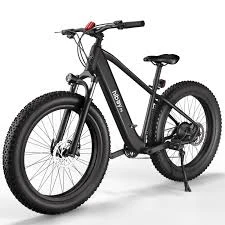9 月 . 01, 2024 04:26 Back to list
How to Adjust Shifters on Mountain Bike | A Step-by-Step Guide
How to Adjust Shifters on a Mountain Bike
Maintaining your mountain bike involves periodic adjustments to ensure a smooth and efficient riding experience. One crucial aspect of bike maintenance is the adjustment of shifters, which control your bike's gear system. In this guide, we'll walk you through the steps to properly adjust the shifters on your mountain bike, making it easier to shift gears and enhancing your riding performance.
Understanding Your Shifters
Mountain bike shifters, whether integrated with brake levers or as separate components, play a vital role in controlling your bike's derailleur system. The derailleur moves the chain between different gear ratios, allowing for smoother transitions when navigating various terrains. Before diving into adjustments, it’s important to understand how your specific shifter works, as different brands and models may have varied mechanisms.
Tools You May Need
Before you start, gather the following tools - Phillips screwdriver - Allen wrench set - Chain lubricant
Step-by-Step Adjustment Process
1. Inspect the Current Setup Begin by checking if the shifters are functioning properly. Shift through all the gears while the bike is stationary. Pay attention to any skipping, dragging, or delayed shifts, as these issues indicate that adjustments are needed.
how to adjust shifters on mountain bike

2. Adjusting the Limit Screws Each derailleur has limit screws that prevent the chain from shifting beyond the smallest and largest gears. Locate these screws, typically marked as “H” (high) and “L” (low). Adjust them by turning clockwise or counterclockwise to fine-tune the derailleur’s range. Start with the rear derailleur; ensure it aligns perfectly with the smallest and largest sprockets.
3. Tensioning the Cable Once the limit screws are set, it’s time to check the cable tension. Shift to the smallest chainring in the front and the largest sprocket in the back. If the derailleur does not move the chain smoothly, increase the tension. This can usually be done via a barrel adjuster located on the shifter or derailleur. Turn it slowly until the shifting becomes smooth.
4. Fine-Tuning Shifting Shift through all gears again. If you experience any missed shifts or delays, you may need to perform additional tension adjustments. Repeat as necessary until the shifts feel precise and immediate.
5. Lubricate the Components Once adjustments are complete, apply a small amount of lubricant to the chain and derailleur pivots. This will enhance mobility and reduce wear, promoting longevity in the shifting mechanism.
Test Ride
After making your adjustments, take your mountain bike for a test ride. Pay close attention to the response of the shifters and the derailleur. A well-adjusted system should provide seamless transitions between gears, allowing you to tackle any terrain with ease.
Conclusion
Regularly adjusting the shifters on your mountain bike not only improves performance but also prolongs the life of your gear system. With a few tools and a little patience, you can maintain a well-functioning bike that enhances your riding experience. If you find the adjustments too complex, don’t hesitate to seek professional assistance from a local bike shop. Happy riding!
-
The Main Application Scenarios of Mountain Bike
NewsOct.29,2024
-
Suggestions for Selecting and Maintaining Mountain Bike
NewsOct.29,2024
-
Characteristics of Kids Balance Bike
NewsOct.29,2024
-
Characteristics of Baby Stroller
NewsOct.29,2024
-
Characteristics and Advantages of Mountain Bike
NewsOct.29,2024
-
Baby Stroller Purchasing Suggestions
NewsOct.29,2024
-
Suggestions for Purchasing Kids Balance Bike
NewsOct.09,2024

